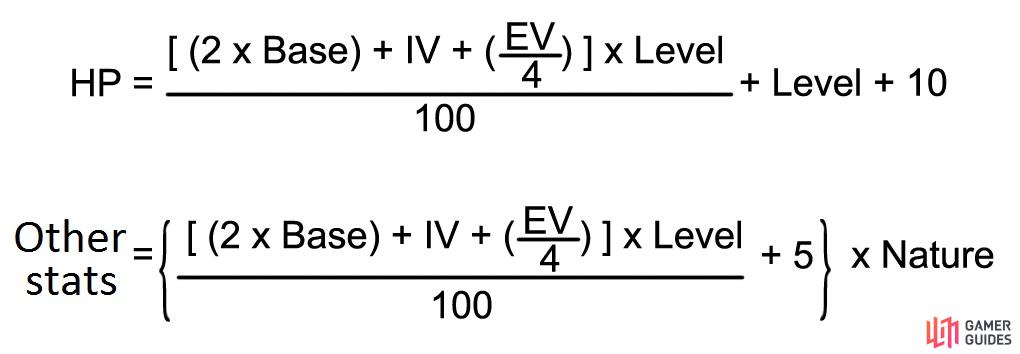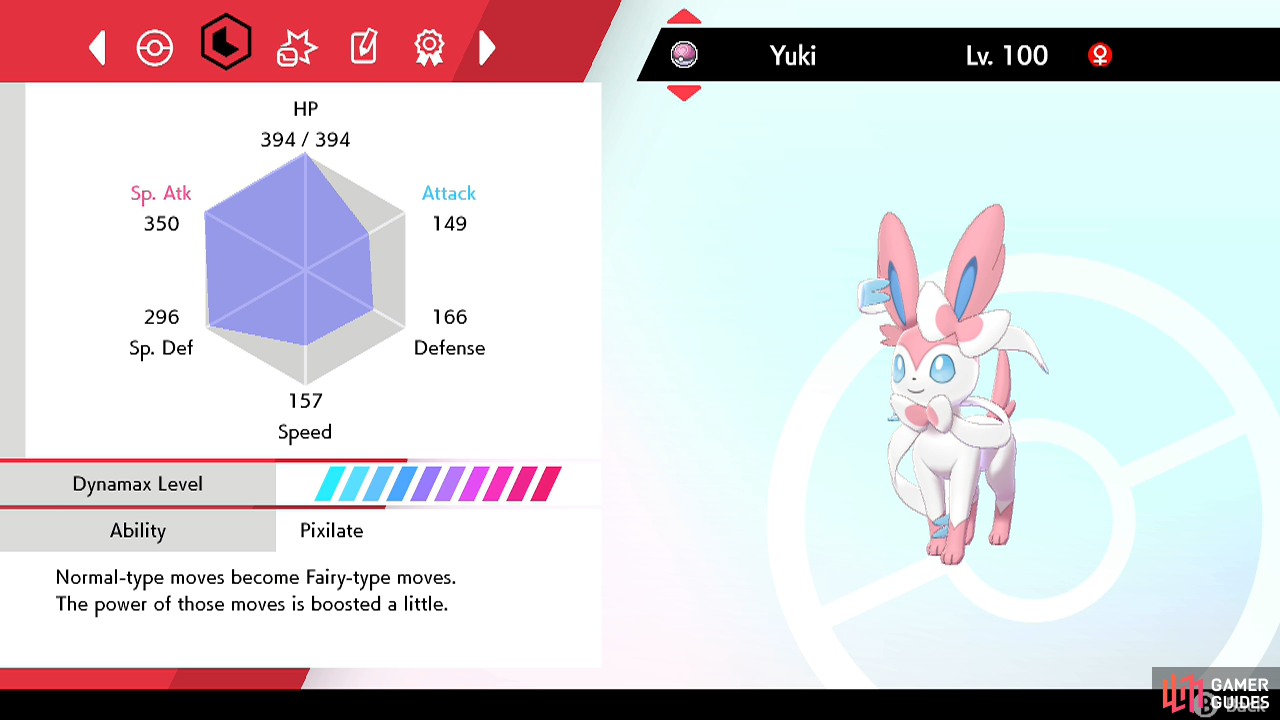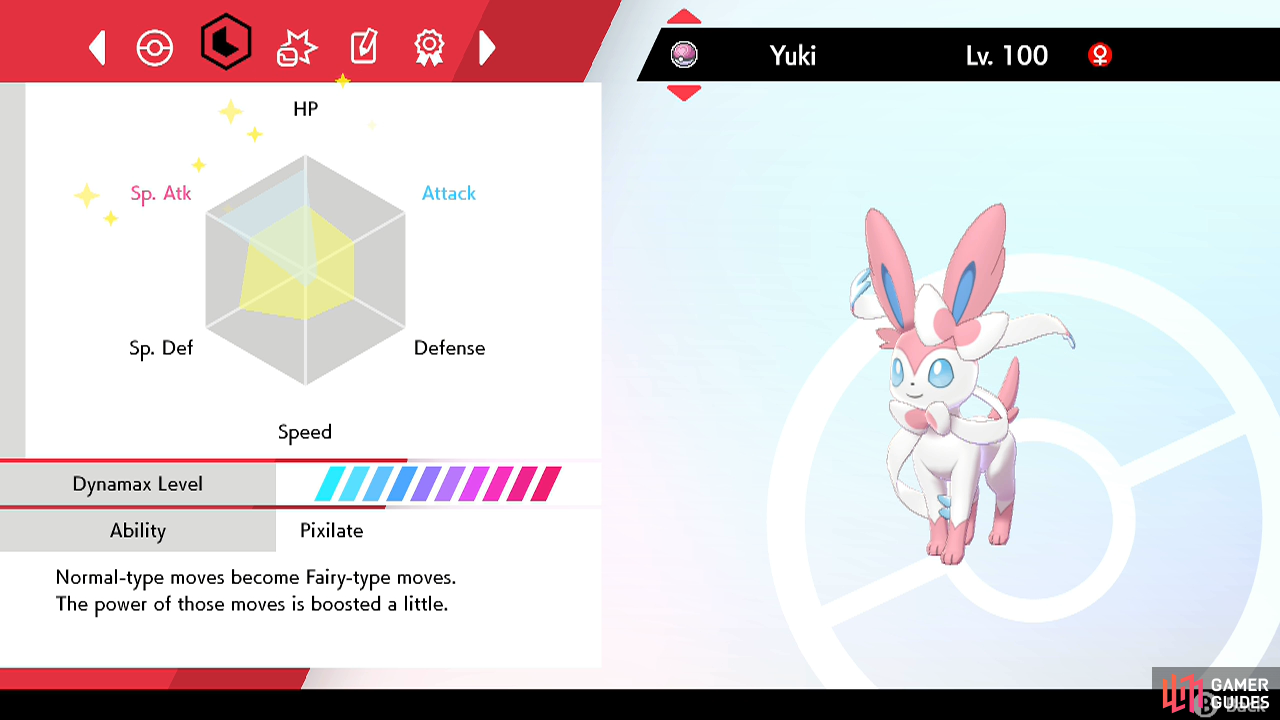If you’ve made it this far, that either means you’re ready to learn more about the intricacies of Pokémon. Or you’re extremely bored. Regardless, you’re here and that’s what matters! In this section, we’ll be covering the more nitty and gritty side of things, starting with Pokémon stats. By that, we’re referring to the key stats: HP through Speed.
How Stats are Calculated¶
First, let’s go over the obvious facts. Pokémon that are higher level have higher stats. Next, some Pokémon species have better or worse stats than other Pokémon species. This is most obvious when comparing, say, an unevolved and evolved Pokémon. Also, Legendary Pokémon typically have better stats than other Pokémon.
Now for the less obvious factors. Nature is something you can see in-game, but isn’t quantitatively explained. A Pokémon’s Nature can boost one of their stats by 10% (shown in red) and decrease another stat by 10% (shown in blue). You can find more details in the following pages.
In most scenarios, each individual Pokémon will have slightly different stats. So two  Eevees at the same level, with the same Nature, can still vary. But this may not be true during the final stages of breeding or when you receive certain Pokémon as gifts. Finally, Pokémon you’ve trained have better stats than Pokémon you’ve freshly caught.
Eevees at the same level, with the same Nature, can still vary. But this may not be true during the final stages of breeding or when you receive certain Pokémon as gifts. Finally, Pokémon you’ve trained have better stats than Pokémon you’ve freshly caught.
Putting all this together, here’s how to calculate a Pokémon’s stats:
(IVs and EVs will be discussed in the following pages.)
Consequences¶
If this is all a bit much, don’t worry. Because there won’t be an exam where you need to recite these formulae by heart–in fact, you’re not actually supposed to know of them. However, understanding the formulae isn’t actually that tricky, if you just sit down and study them for a bit.
For the mathematically inclined, there’s a lot of information that can gleamed. Primarily, Pokémon do not gain stats when they level up, in the traditional sense at least. This can be counter-intuitive at first, especially when you see the +1, +2, +3, etc. next to a stat when a Pokémon level ups.
You can actually figure it out from the formula. When a Pokémon levels up, their stats are simply scaled to their new level. The “stat gains” that are shown are simply the difference in scaling between the previous level and the new level. Now what exactly is the difference, you might be asking?
Well, for one, this explains what happens when you enter a battle where all Pokémon above Level 50 are set to Level 50. It’s not that your Pokémon’s stats have been physically decreased, but their stats have literally been scaled down from whatever level to Level 50. The more you know, huh?
The Hexagonal Chart¶
(1 of 2) Default display.
Default display. (left), Advanced display. (right)
By default, the blue shape represents your Pokémon’s numerical stats (which are displayed around the outer edges of the chart). So the closer the shape is to the edge, the better that stat. By the way, the biggest value that the chart can track is 300, although it’s possible to exceed this number.
Ready for some magic? Press the X Button and the chart will switch to an “advanced” form. The pale yellow shape in the middle represents the Pokémon’s species’s stats. Meanwhile the shape inside it represents your Pokémon’s Effort Values (EVs).
If the inner shape is yellow in colour, it means your Pokémon can still gain EVs. However, if it’s pale blue, it means the Pokémon has reached its full capacity. Also, if a stat is sparkling, that means the maximum amount of EVs has been invested into it.




 Sign up
Sign up
No Comments